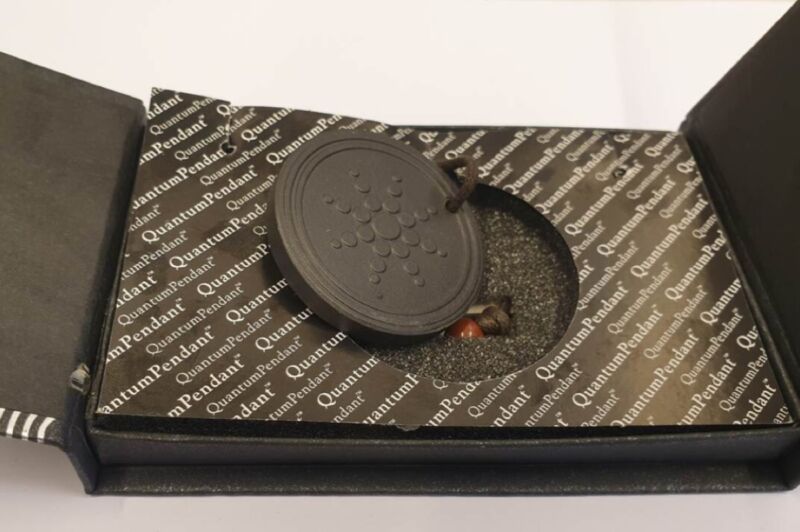
Worried that 5G cell phone towers are beaming dangerous levels of radiofrequency radiation into your brain? Forget the classic tinfoil hat and try the "quantum pendant" pictured above. It's a much more stylish accessory. The product leans on a tried and true pseudoscientific marketing gimmick: Slap the label "quantum" on something, and the word imparts an aura of magical mystery in the minds of the perpetually gullible.
These kinds of "negative ion" products can be found for sale all over the Internet, claiming to enhance immune function, increase energy, and, yes, protect the wearer from supposedly harmful 5G waves, among other purported benefits. The hysteria over 5G risks has no scientific basis, and even if it did, "negative ions" aren't some kind of magical defense. But if people want to spend their hard-earned cash on nonsense, that's their prerogative. No harm, no foul, right?
Not so fast. It turns out that many of these products emit low levels of ionizing radiation that could be dangerous over prolonged use—so much so that the Authority for Nuclear Safety and Radiation Protection (ANVS) in the Netherlands has just issued a consumer warning and banned the sale of ten such products, including that snazzy quantum pendant.
This isn't the first time someone has noticed these types of "negative ion" products are radioactive. The products can contain volcanic ash, titanium, tourmaline, zeolite, germanium, and monazite sand and may also contain naturally occurring radioactive elements, including uranium and thorium. Granted, there are trace amounts in the products, but the emitted gamma radiation is still sufficient to set off radiation monitoring equipment. (Then again, so can a truck full of bananas.)
While the agency has no authority to ban foreign suppliers, it did pledge to report such suppliers to the appropriate authorities in their own countries. (Ionic air purifiers, on the other hand, do not contain radioactive materials and are exempt from the ban.) Per the ANVS:
The consumer products tested contain radioactive materials and therefore continuously emit ionizing radiation, thereby exposing the wearer. Exposure to ionizing radiation can cause adverse health effects. Due to the potential health risk they pose, these consumer products containing radioactive materials are therefore prohibited by law. Ionizing radiation can damage tissue, and DNA and can cause, for example, red skin. Only low levels of radiation have been measured on these specific products. However, someone who wears a product of this kind for a prolonged period (a year, 24 hours a day) could expose themselves to a level of radiation that exceeds the stringent limit for skin exposure that applies in the Netherlands. To avoid any risk, the ANVS calls on owners of such items not to wear them from now on.

As we've previously reported, wireless technology has long sparked fears based on vague accusations that it causes health issues and claims that some people are "electrosensitive." Those fears have been maintained by a handful of ambiguous studies that suggested hints of possible links between cell phone use and cancer, but most of these studies had significant issues. And plenty of other studies saw no connection.
Radiofrequency radiation is relatively low-energy, and it can't break chemical bonds. Like the nearby microwave frequencies, it can heat tissues. But we're not aware of any mechanisms beyond heating by which radiation at these wavelengths can damage human tissue. And there's no evidence at the population level indicating that radiation from these sources poses any sort of risk.
reader comments
274